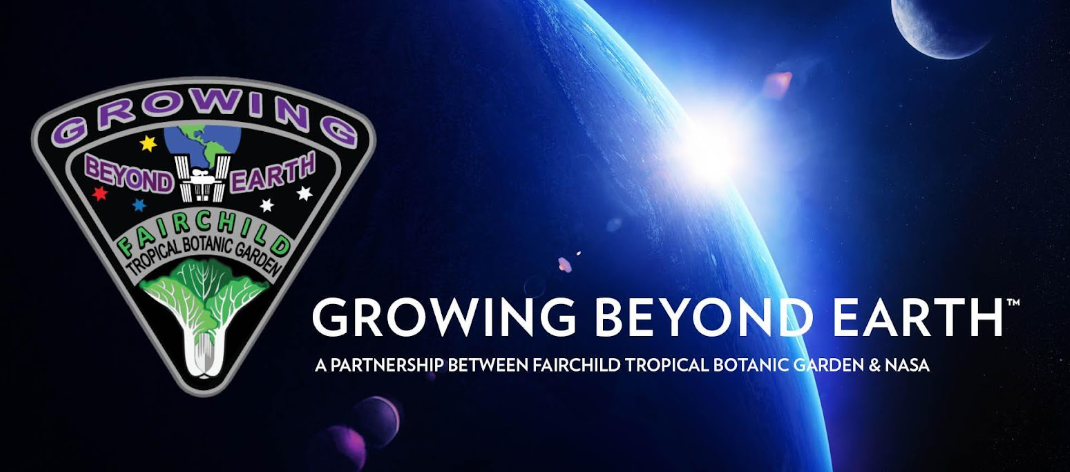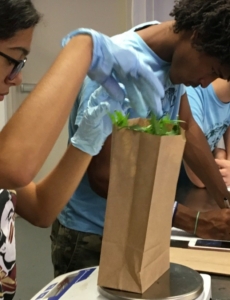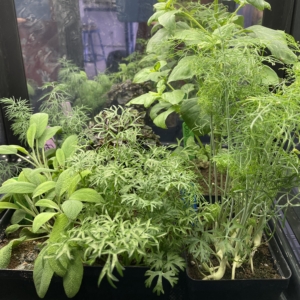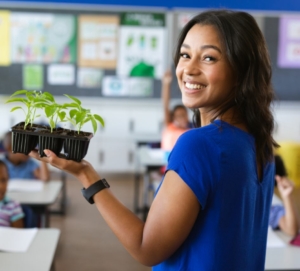Growing Beyond Earth®

Growing Beyond Earth® (GBE) is a classroom-based citizen science program designed to advance NASA research on growing plants in space and to inspire the next generation of explorers. This is a global effort led by the U.S., with multiple mission milestones, involving international and commercial partners and citizen scientists, like yourself. As humans expand into space farther from Earth, the ability to grow sustainable food crops is a solution to a major challenge of long-duration, deep space missions.
Your work on Growing Beyond Earth will directly support NASA’s goals of feeding astronauts on the International
Space Station, Moon, and Mars by providing Crop Readiness Level-1 and -2 data to Dr. Gioia Massa
(Senior Scientist), Trent Smith (Research Advisor), and their Space Crop Production team at NASA Kennedy
Space Center.
There are many science, technology, engineering, and math (STEM) challenges and solutions related to food
production in space that have applications on Earth. Growing Beyond Earth is also advancing technologies for growing plants in urban, indoor, and other resource-limited settings.
Established in 2015 as a partnership between Fairchild Tropical Botanic Garden and the National Aeronautics and Space Administration Science Mission Directorate, Growing Beyond Earth is now underway in 500 middle and high schools from 48 U.S. states and 10 countries. GBE is unique in its focus on real scientific research, enabling student community scientists to actively contribute data toward NASA mission planning. Each classroom receives a Fairchild-designed plant habitat analogous to the Vegetable Production System (Veggie) on the International Space Station (ISS). Fairchild and NASA scientists train teachers to conduct GBE experiments with students and share their results with NASA
Growing Beyond Earth® (GBE) es un programa científico financiado federalmente diseñado para avanzar en la investigación de la NASA sobre el cultivo de plantas en el espacio e inspirar a la próxima generación de exploradores. Growing Beyond Earth contribuye al programa más grande de la NASA, Artemis. El programa Artemis guiará a la humanidad hacia adelante y establecerá bases permanentes en la Luna para facilitar misiones humanas a Marte. Este es un esfuerzo global liderado por EE.UU., con múltiples hitos de misión, involucrando socios internacionales y comerciales, así como científicos ciudadanos como tú. A medida que los humanos se expanden en el espacio más allá de la Tierra, la capacidad de cultivar cultivos alimentarios sostenibles es una solución a un gran desafío de las misiones espaciales de larga duración y profundas.
Tu trabajo en Growing Beyond Earth apoyará directamente los objetivos de la NASA de alimentar a los astronautas en la Estación Espacial Internacional, la Luna, Marte y más allá, proporcionando datos de Nivel-1 y -2 de Preparación de Cultivos al Dr. Gioia Massa (Científico Senior), Trent Smith (Asesor de Investigación) y su equipo de Producción de Cultivos Espaciales en el Centro Espacial Kennedy de la NASA.
Existen numerosos desafíos y soluciones en ciencia, tecnología, ingeniería y matemáticas (STEM) relacionados con la producción de alimentos en el espacio que tienen aplicaciones en la Tierra. GBE también está avanzando en tecnologías para el cultivo de plantas en entornos urbanos, interiores y otros lugares con recursos limitados.
Establecido en 2015 como una asociación entre el Jardín Botánico Tropical Fairchild y la Dirección de Ciencia de la NASA, GBE ahora está en marcha en 500 escuelas secundarias y preparatorias de 48 estados y 10 países. GBE es único en su enfoque en la investigación científica real, permitiendo que los estudiantes-científicos comunitarios contribuyan activamente con datos hacia la planificación de misiones de la NASA. Cada aula recibe un hábitat para plantas diseñado por Fairchild, análogo al Sistema de Producción de Vegetales (Veggie) en la Estación Espacial Internacional (ISS). Los científicos de Fairchild y la NASA capacitan a los docentes para realizar experimentos de GBE con los estudiantes y compartir sus resultados con la NASA.
Announcements
We launched our first 25-26 Chat with a Scientist:
Student KickOff!
Over 1200 students across national and international classrooms joined us for a warm welcome from the GBE team and NASA KSC team Dr. Gioia Massa and Trent Smith!
Upcoming Chat With a Scientist dates:
December 10th @ 3PM Miami Time – Kellie J. Walters, Ph.D. – Controlled Environment Vegetable Physiology – Zoom Link
Can’t make it but want to ask questions? Email us and we’ll ask live, or fill out this form!
View past sessions here: Chat with a Scientist
As Trial 1 experiments wrap up, have your students consider what might happen if something were to have been changed in their experiments. By changing one variable, what outcomes can they achieve?
For Trial 2, we hope to see those changes in action and have your students be inspired to try their own original research.
Your students will submit a proposal telling us what they want to do for their original experiment, and real researchers and scientists will review their proposal and provide feedback before Trials begin.
This original research will then give students the opportunity to present their findings at our Student Research Symposium.
Trial 2 Experiment Proposals will be due on December 12th. Feedback will be provided by January 9th. Submit your proposal here.
Our 2025-2026 Student Research Symposium is scheduled for April 11th, 2026.
This will include a virtual and in-person component.
The datasets from this year’s prescribed experiments are now available!
Miami-Dade, Broward, Palm Beach or Monroe County Teacher?
Visit the Fairchild Challenge home page for more information about this and other Challenges.
Need more information, contact GBE@fairchildgarden.org

This website is based upon work supported by NASA Science Activation Grant No. 80NCCS22M0125-SciAct. Any opinions, findings, conclusions, or recommendations expressed in this material are those of the authors and do not necessarily reflect the views of the National Aeronautics and Space Administration.
Este sitio web se basa en el trabajo respaldado por NASA Grant No. 80NCCS22M0125-SciAct. Todas las opiniones, hallazgos, conclusiones o recomendaciones expresadas en este material pertenecen a los autores y no reflejan necesariamente los puntos de vista de la Administración Nacional de Aeronáutica y del Espacio.
With generous support from

Partners:







